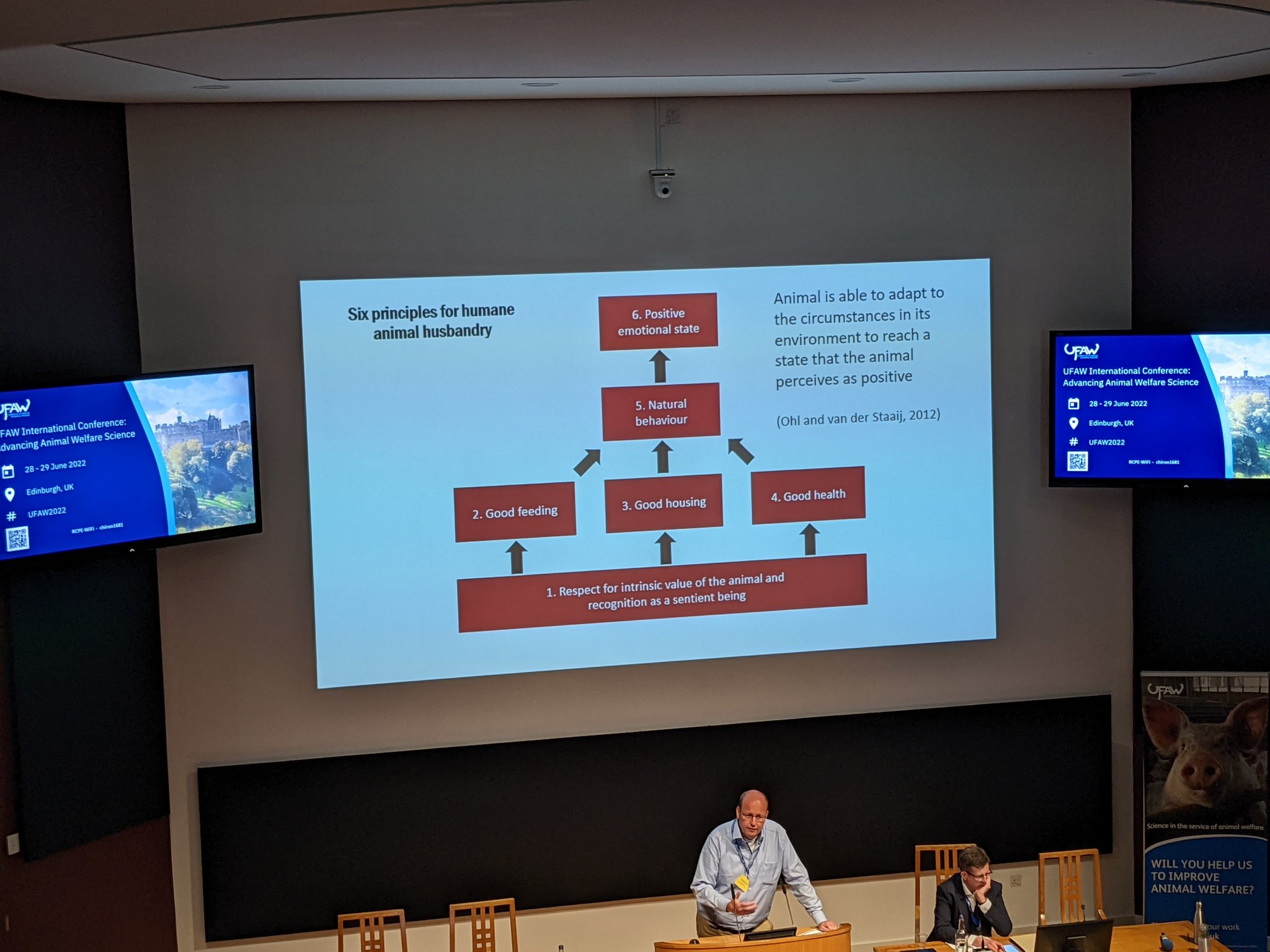UFAW 2022 recap
This year's UFAW (University Federation for Animal Welfare) international conference is back in person in Edinburgh. I am very happy to be able to visit my old, beautiful city and to take part in this important annual conference in animal welfare, especially after 2 years of the pandemic. One of the few benefits now going through a pandemic for the academic circle is that most conferences start to realise the importance of making information more accessible through online/hybrid format and it can help reach more people geographically and people who may not be financially privileged to attend international conferences. I published previously also sharing our experience at ISAE (International Society for Applied Ethology) in hosting our fist ever virtual meeting back in 2020. https://doi.org/10.1016/j.applanim.2021.105369 (Open access!)
The theme of the UFAW conference this year is "Advancing Animal Welfare Science." All four keynote talks share a similar theme, how to improve animal welfare science, its quality, its methods of measurement, its response to the growing demand in animal production and its role in policy making. Hanno Würbel's talk focused on the process of making science, same issues that have been mentioned in many of the events I attended this year, and how to make science more relevant, rigorous, responsible, reproducible, and valid. Bas Rodenburg gave a more promising future outlook in terms of the increasing demand on food, which, although not necessarily having to translate into more animal production, can still put pressure on higher intensification of farm animals. The case of the Netherlands seems to give an example of an integrated approach to include multiple stakeholders like farmers and consumers to make the transition to more humane animal husbandry possible.
This is by no means exhaustive, only based on my notes. I'm leaning towards the supporting side as my own experience from home has been positive with the minimum egg production system labelling, which becomes a driver of consumer behavioural changes and spread the basic knowledge of different laying hen production systems. We will have to see if EU will indeed develop a EU-wide animal welfare labelling system which can further unifies between countries. I will welcome this but I can imagine it will take some cross-country efforts to make it happen.


